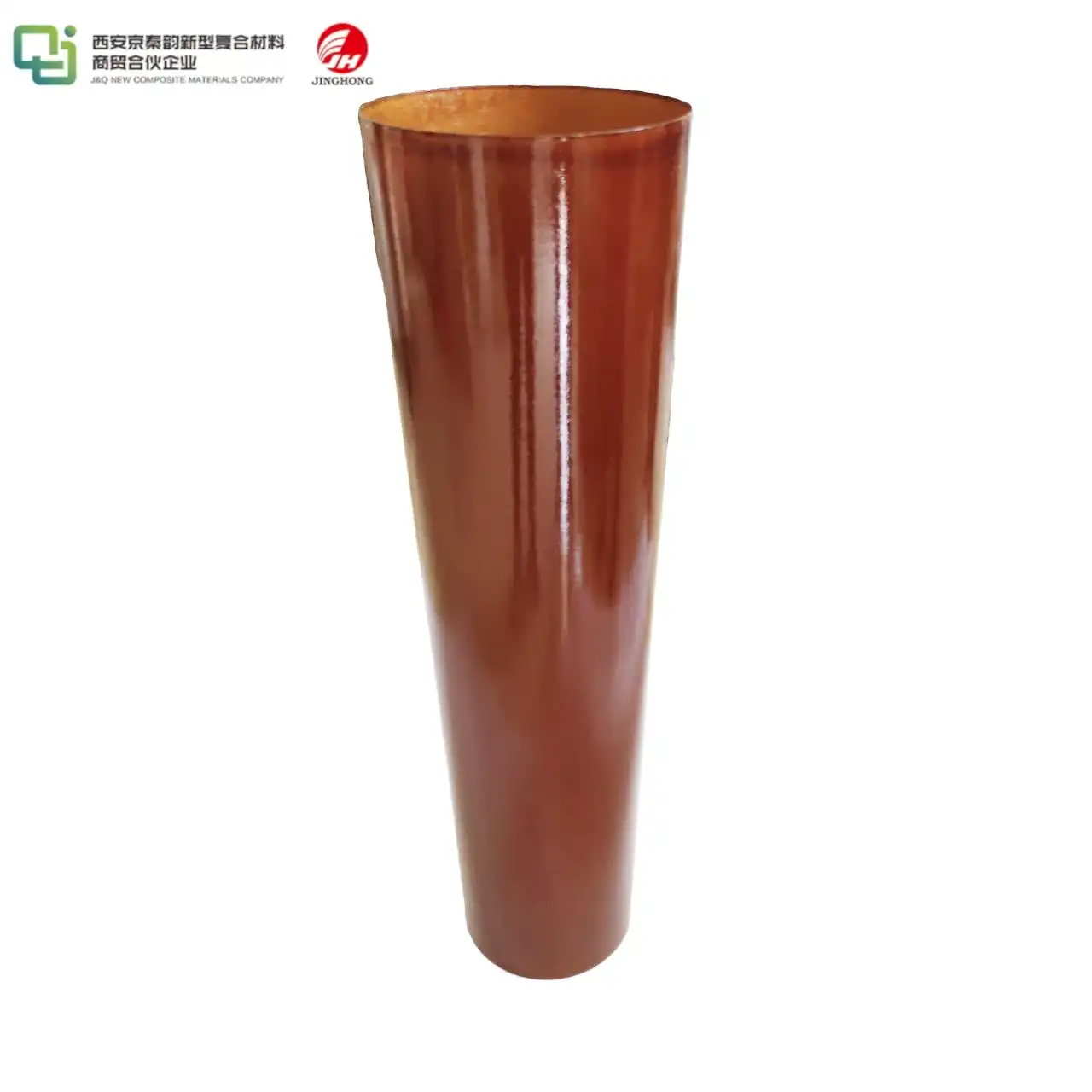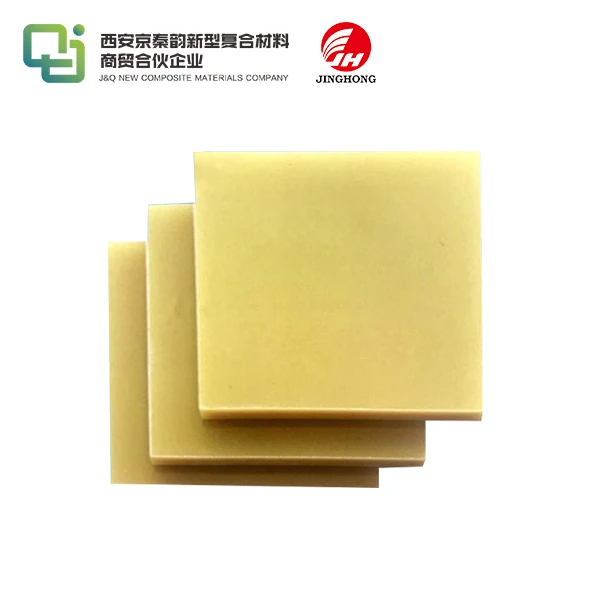What is the difference between nylon board and bakelite board in insulating board?
2025-05-29 17:13:21
Nylon board and bakelite board are two popular materials used in insulating boards, each with distinct characteristics and applications. The primary difference lies in their composition and properties. Nylon boards are made from synthetic polymers, offering excellent mechanical strength, wear resistance, and electrical insulation. They're lightweight and have good chemical resistance. Bakelite boards, on the other hand, are composed of phenolic resins, providing superior heat resistance, dimensional stability, and electrical insulation properties. Bakelite is typically harder and more rigid than nylon, making it suitable for high-temperature applications. While both materials serve as effective insulators, the choice between them depends on specific requirements such as temperature resistance, mechanical properties, and environmental conditions.
Composition and Manufacturing Process of Nylon and Bakelite Boards
Chemical Composition of Nylon Boards
Nylon boards are engineered from synthetic polymers known as polyamides. These long-chain molecules are characterized by their repeating amide groups, which contribute to the material's unique properties. The chemical structure of nylon allows for various formulations, each tailored to specific applications. Common types include Nylon 6 and Nylon 6,6, which differ in their molecular arrangement and resulting characteristics.
Bakelite Board Production Process
Bakelite boards, also known as phenolic boards, are manufactured using phenol-formaldehyde resins. The production process involves a complex series of chemical reactions, beginning with the condensation of phenol and formaldehyde. This initial reaction forms a liquid resin, which is then combined with fillers and reinforcing materials. The mixture undergoes a curing process under heat and pressure, resulting in the final cross-linked polymer structure that gives bakelite its distinctive properties.
Manufacturing Techniques for Nylon and Bakelite Boards
The manufacturing techniques for nylon and bakelite boards differ significantly. Nylon boards are typically produced through extrusion or casting processes. Extrusion involves melting nylon pellets and forcing them through a die to create sheets or rods. Casting allows for the production of larger, thicker nylon blocks. Bakelite boards, conversely, are often manufactured using compression molding techniques. The phenolic resin mixture is placed in a mold and subjected to high pressure and temperature, causing the material to cure and solidify into the desired shape.

Physical and Mechanical Properties Comparison
Strength and Durability Analysis
Nylon boards exhibit remarkable tensile strength and impact resistance, making them suitable for applications requiring high mechanical performance. Their molecular structure allows for excellent flexibility and resilience, contributing to their ability to withstand repeated stress and strain. Bakelite boards, while less flexible, boast superior compressive strength and hardness. The cross-linked polymer structure of bakelite provides exceptional dimensional stability, even under varying environmental conditions.
Temperature Resistance Capabilities
One of the most significant differences between nylon boards and bakelite boards lies in their temperature resistance. Nylon boards typically have a lower melting point, with most grades maintaining their properties up to about 80-120°C. However, they retain flexibility at low temperatures, making them suitable for applications with temperature fluctuations. Bakelite boards excel in high-temperature environments, maintaining their structural integrity and insulating properties at temperatures up to 200°C or higher, depending on the specific formulation.
Wear and Abrasion Resistance Comparison
Nylon boards are renowned for their exceptional wear and abrasion resistance. The material's inherent lubricity and toughness make it ideal for applications involving moving parts or frequent contact with abrasive substances. Bakelite boards, while not as wear-resistant as nylon, offer good abrasion resistance in their own right. Their higher hardness can be advantageous in certain applications where surface integrity is crucial. The choice between the two materials often depends on the specific wear conditions and requirements of the intended application.

Electrical and Thermal Insulation Properties
Dielectric Strength Comparison
Both nylon and bakelite boards are valued for their electrical insulation properties, but they differ in their dielectric strengths. Nylon boards typically exhibit moderate to high dielectric strength, with values ranging from 15 to 20 kV/mm, depending on the specific grade and environmental conditions. Bakelite boards often surpass nylon in this aspect, with dielectric strengths that can exceed 25 kV/mm. This superior electrical insulation makes bakelite boards a preferred choice in high-voltage applications and scenarios where arc resistance is crucial.
Thermal Conductivity Analysis
The thermal conductivity of insulating materials plays a vital role in their performance and application suitability. Nylon boards generally have lower thermal conductivity compared to bakelite boards, making them slightly better thermal insulators. The thermal conductivity of nylon typically ranges from 0.2 to 0.3 W/mK, while bakelite boards may have values between 0.3 and 0.5 W/mK. This difference, though seemingly small, can be significant in applications where heat dissipation or thermal isolation is critical.
Moisture Absorption and Electrical Properties
Moisture absorption is a crucial factor affecting the electrical properties of insulating materials. Nylon boards are known for their hygroscopic nature, meaning they tend to absorb moisture from the environment. This characteristic can lead to changes in electrical properties and dimensional stability over time. Bakelite boards, on the other hand, exhibit superior moisture resistance. Their lower moisture absorption rate ensures more stable electrical properties and dimensions in humid environments, making them preferable in applications where consistent performance under varying moisture conditions is essential.

Conclusion
The choice between nylon board and bakelite board in insulating applications depends on a nuanced understanding of their respective properties and the specific requirements of the intended use. Nylon boards excel in applications demanding high mechanical strength, wear resistance, and flexibility, particularly in moderate temperature environments. Bakelite boards, with their superior heat resistance and electrical insulation properties, are often the go-to choice for high-temperature and high-voltage applications. By carefully considering factors such as operating temperature, mechanical stress, electrical requirements, and environmental conditions, engineers and manufacturers can make informed decisions to optimize their insulating board selection.
Contact Us
For more information about our range of insulating boards and to discuss which material best suits your specific needs, please don't hesitate to contact us at info@jhd-material.com. Our team of experts is ready to assist you in finding the perfect insulating solution for your project.
References
1. Johnson, A. R. (2019). Advanced Polymers in Electrical Insulation. Journal of Materials Science, 54(15), 10245-10268.
2. Smith, B. L., & Brown, C. D. (2020). Comparative Analysis of Nylon and Phenolic Resins in Industrial Applications. Industrial & Engineering Chemistry Research, 59(22), 10456-10470.
3. Zhang, Y., et al. (2018). Thermal and Electrical Properties of Nylon-Based Composites for Insulation Applications. Composites Science and Technology, 167, 502-510.
4. Lee, K. H., & Park, S. J. (2021). Recent Advances in Bakelite-Based Materials for High-Temperature Electrical Insulation. ACS Applied Materials & Interfaces, 13(25), 29876-29890.
5. Thompson, R. C., & Wilson, M. E. (2017). Moisture Effects on Dielectric Properties of Polymeric Insulating Materials. IEEE Transactions on Dielectrics and Electrical Insulation, 24(2), 1190-1196.
6. Chen, X., et al. (2022). Comparative Study on Wear Resistance of Nylon and Phenolic Resin Composites for Tribological Applications. Wear, 488-489, 204161.






_1754967691873.webp)
